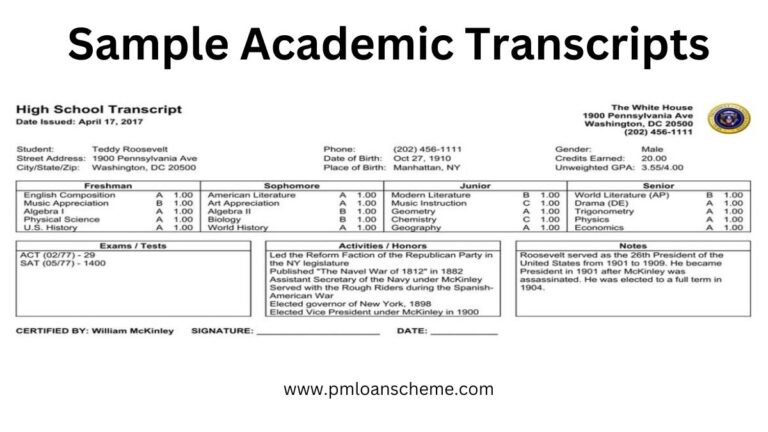How to Calculate SGPA ?
SGPA, or Semester Grade Point Average, is a grading system widely used in India to evaluate a student’s performance over a single semester. Similar to CGPA (Cumulative Grade Point Average), which measures overall academic achievement across multiple semesters, SGPA provides a snapshot of how a student performed in one term.
To calculate SGPA, the total grade points earned in all courses of the semester are added up and then divided by the total credit hours for those courses. Many universities and colleges have adopted SGPA as a means to help students understand their strengths and areas for improvement within a specific semester, making it easier to track academic progress and set goals for the future.

SGPA calculation has become a popular tool for students to assess their current academic standing. By calculating SGPA at the end of each semester, students and educators can evaluate academic progress in a structured way, which can guide future study plans and performance improvement strategies.
In this article, you’ll learn all about SGPA (Semester Grade Point Average), how to calculate it, the importance of understanding your academic performance, and much more. Whether you’re a student or an academic advisor, this guide is designed to help you with everything you need to know about SGPA.
What is SGPA?
SGPA stands for Semester Grade Point Average. It is a metric used by many universities and colleges worldwide to assess the academic performance of a student for a particular semester. Unlike CGPA (Cumulative Grade Point Average), which measures performance across all semesters, SGPA focuses only on individual semester results.
SGPA is crucial for students who want a clear picture of how they performed in each term. Universities often base scholarships, internships, and other academic opportunities on SGPA scores, which makes understanding this metric essential.
Formula for calculating SGPA:
SGPA = (Sum of (Credit Points * Grade Points)) / Total Credit Points
Semester 1
| Course No. | Credits | Grade | Grade Points | Credit Points (Credits × Grade Points) |
|---|---|---|---|---|
| Course No. ABCD2101 | 4 – 1 – 0 = 5 | B | 7 | (5 × 7) = 35 |
| Course No. ABCD2102 | 2 – 3 – 0 = 5 | F (Absent)** | 0 | (5 × 0) = 0 |
| Course No. ABCD2103 | 3 – 0 – 0 = 3 | A | 10 | (3 × 10) = 30 |
| Course No. ABCD2104 | 1 – 1 – 0 = 2 | F** | 0 | (2 × 0) = 0 |
| Course No. ABCD2105 | 3 – 2 – 0 = 5 | D | 5 | (5 × 5) = 25 |
| Course No. ABCD2106 | 3 – 2 – 1 = 6 | C | 6 | (6 × 6) = 36 |
Total Credits for Semester 1: 26
Total Credit Points: (35 + 0 + 30 + 0 + 25 + 36) = 126
Why is SGPA Important?
SGPA is a standardized way for educational institutions to evaluate student performance over a specific period. This metric allows students and academic advisors to:
- Monitor Academic Progress: Students can assess whether they’re meeting their academic goals each semester.
- Identify Strengths and Weaknesses: Knowing your SGPA helps you pinpoint strong subjects and areas for improvement.
- Plan for the Future: SGPA is essential when applying for scholarships, internships, or graduate programs, as many institutions have minimum SGPA requirements.
- Build a Competitive Profile: Having a solid SGPA contributes to a strong academic profile, which can benefit students applying for international studies, internships, or employment opportunities.
Difference Between SGPA, CGPA, and GPA
While SGPA is semester-specific, CGPA (Cumulative Grade Point Average) gives a cumulative overview of a student’s academic performance over multiple semesters. The GPA (Grade Point Average), commonly used in North America, is similar to CGPA but can apply to individual courses or semesters. Here’s a quick comparison:
| Metric | Full Form | Scope | Purpose |
|---|---|---|---|
| SGPA | Semester Grade Point Average | One Semester | Measures performance for a specific semester |
| CGPA | Cumulative Grade Point Average | Entire Academic Program | Averages SGPAs across all semesters |
| GPA | Grade Point Average | Varies by System (Semester/Course) | Generalized grade point metric, often semester-based |
In many universities, SGPA is converted to CGPA after each semester, so students can track both their immediate and long-term academic performance.
Understanding the SGPA Calculation Formula
The formula to calculate SGPA is straightforward:
Each course in a semester is assigned a certain number of credit hours and grade points based on the student’s performance. Grade points generally range from 0 to 10 (or a scale as defined by the institution). Here’s a simplified version of the formula:
- Multiply the grade point received for each course by its credit hours.
- Add the results for all courses in the semester.
- Divide by the total credit hours for the semester.
Step-by-Step Guide to Calculate SGPA
Let’s break down the calculation into manageable steps:
- Step 1: Identify Your Courses and Credit Hours
For each course you took during the semester, note down the credit hours assigned. Commonly, tougher or core courses have more credit hours.
- Step 2: Find Your Grade Points
Grade points are assigned based on your performance in each course. Most grading systems use a scale from 0 to 10.
- Step 3: Multiply Grade Points by Credit Hours
For each course, multiply the grade points with the credit hours.
- Step 4: Sum the Results
Add all the products from Step 3 to get a cumulative score.
- Step 5: Divide by Total Credit Hours
Finally, divide this cumulative score by the total credit hours of all courses taken in the semester. The resulting number is your SGPA.
Examples of SGPA Calculation
To make the SGPA calculation process clearer, learn how to calculate sgpa from marks let’s go through an example.
Example 1:
Suppose a student took the following four courses:
| Course Name | Grade Point (out of 10) | Credit Hours |
|---|---|---|
| Course 1 | 8 | 3 |
| Course 2 | 7 | 4 |
| Course 3 | 9 | 3 |
| Course 4 | 6 | 2 |
- Multiply each course’s grade points by its credit hours:
- Course 1: 8 × 3 = 24
- Course 2: 7 × 4 = 28
- Course 3: 9 × 3 = 27
- Course 4: 6 × 2 = 12
- Sum the results: 24 + 28 + 27 + 12 = 91
- Total credit hours: 3 + 4 + 3 + 2 = 12
- SGPA = 91 ÷ 12 = 7.58
Thus, the SGPA for this semester would be 7.58.
Converting SGPA to CGPA
If you need to calculate your CGPA over multiple semesters, follow these steps:
- Sum all SGPAs for each semester and multiply by the credit hours for that semester.
- Add all credit hours for all semesters.
- Divide the cumulative SGPA value by the total credit hours.
The Importance of SGPA in Studying Abroad
Your SGPA, or Semester Grade Point Average, is a key factor in turning your study abroad aspirations into reality. A strong SGPA reflects consistent academic performance and can open doors to a wider range of universities and programs. Admissions committees often look closely at SGPA as an indicator of your academic abilities, making it an influential component of your application.
A higher SGPA can also improve your chances of qualifying for scholarships and educational loans, potentially easing the financial burden of international study. For competitive scholarships, having a strong SGPA is often essential, as it signals dedication and capability to scholarship boards.
On the other hand, if your SGPA is on the lower side, you may need to compensate with high scores on standardized exams like TOEFL, IELTS, or GRE. Building a strong application with compelling letters of recommendation and relevant extracurriculars can also help strengthen your profile and enhance your chances of being admitted to your chosen program.
Common Mistakes to Avoid While Calculating SGPA
- Incorrect Grade Points: Ensure you’re using the correct grade points as per the official grading scale.
- Overlooking Credit Hours: Not all courses carry the same weight; always factor in credit hours.
- Misinterpreting Formula: Some students mistakenly add grade points directly without multiplying by credit hours.
Tips to Improve Your SGPA
Here are some proven strategies for boosting your SGPA:
- Plan a Study Schedule: Prioritize tougher courses with more credit hours as they have a greater impact on SGPA.
- Stay Consistent: Avoid last-minute studying; consistent study habits improve retention and performance.
- Seek Help When Needed: If you’re struggling, reach out to professors, tutors, or classmates for guidance.
- Focus on Core Subjects: High performance in core courses often carries more credit hours and can significantly improve your SGPA.
- Balance Your Course Load: Don’t overload yourself with too many challenging courses in one semester.
FAQs on SGPA Calculation
What is SGPA?
SGPA stands for Semester Grade Point Average, a metric that calculates a student’s academic performance over a single semester. It’s commonly used in India and other countries to evaluate semester-specific academic achievements.
How is SGPA different from CGPA?
SGPA measures performance for a single semester, while CGPA (Cumulative Grade Point Average) represents a student’s overall academic performance across multiple semesters. CGPA is generally a cumulative average of all SGPAs earned throughout the course of a program.
Why is SGPA important for studying abroad?
SGPA reflects your academic abilities and consistency, making it a crucial part of the admissions evaluation process for international universities. A higher SGPA often enhances your eligibility for scholarships, financial aid, and a wider range of program options.
What SGPA is considered good for studying abroad?
While requirements vary by country and program, an SGPA equivalent to 7.0 or above (on a 10-point scale) is typically seen as competitive. Some top universities may have higher expectations, so it’s essential to check specific program requirements.
Can a lower SGPA be compensated by high standardized test scores?
Yes, if your SGPA is lower, strong scores on exams like the GRE, GMAT, TOEFL, or IELTS can improve your application. Additionally, showcasing a strong overall profile—through extracurricular achievements, work experience, and impactful recommendation letters—can help balance a lower SGPA.
How can I improve my SGPA if I plan to study abroad?
To boost your SGPA, focus on consistent study habits, seek help in challenging subjects, and manage your course load effectively each semester. Prioritizing courses with higher credit hours can also have a positive impact on your SGPA.
Is SGPA important for scholarship eligibility?
Yes, a higher SGPA can make you more eligible for merit-based scholarships, as it demonstrates academic excellence. Some scholarships have minimum SGPA requirements, so maintaining a strong SGPA can increase your chances of receiving financial aid.
How can SGPA affect my chances of getting an education loan?
Many lenders consider SGPA as part of their criteria, as a good SGPA suggests academic dedication and lower dropout risks. A higher SGPA can therefore improve your eligibility for student loans with better terms.
Is SGPA calculated the same way in every country?
No, grading systems vary between countries and institutions. The method to calculate SGPA may differ, and some universities may use alternative grading scales. If applying abroad, you may need to convert your SGPA into the target country’s grading format.
Q. How can I calculate my SGPA if my university uses a different grading system?
A. Typically, SGPA is calculated by dividing the total grade points earned by the total credit hours for that semester. If your institution uses a different scale, you might use a GPA conversion tool or consult your academic office for help with conversion.
Q: Can SGPA vary between universities?
A: Yes, different universities may use slightly different grading scales. Some might use a scale of 0 to 4, others from 0 to 10.
Q: Is SGPA the only metric for academic performance?
A: No. SGPA provides a snapshot of a single semester, while CGPA and cumulative GPA provide a broader view of overall performance.
Q: How does SGPA affect future opportunities?
A: High SGPA scores can lead to scholarship opportunities, internships, and ease of acceptance into competitive programs.
Final Thoughts
Understanding SGPA and its calculation is crucial for academic success. By following a clear approach and avoiding common mistakes, students can gain a more accurate view of their performance and take informed steps to improve it.


